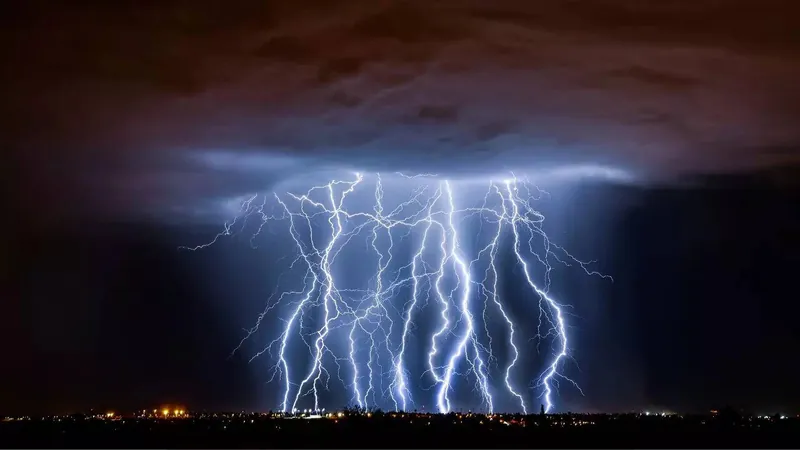
Shocking Discovery: The Hidden Truth Behind Lightning Strikes Unveiled!
2025-08-01
Author: Yu
The Mystery of Lightning Unraveled!
Lightning, nature's most breathtaking and feared spectacle, has fascinated humanity for centuries. Those dazzling flashes and roaring thunder not only spark legends but have also driven scientific inquiry. Despite monumental strides since Benjamin Franklin's iconic kite experiment in 1752, the exact triggers of lightning have remained puzzling—until now!
New Breakthrough in Meteorology!
A groundbreaking team of international researchers has finally shed light on what ignites these powerful bolts. Through innovative mathematical models and simulations, scientists at Penn State University have uncovered the precise mechanism of lightning formation. After more than 200 years of research, the process that had eluded explanation is now being mapped out in intricate detail, as revealed by lead researcher Professor Victor Pasko.
How Lightning Actually Strikes!
Inside thunderclouds, strong electric fields accelerate electrons to dizzying speeds, turning them into minuscule, high-speed projectiles. As these electrons collide with air molecules like nitrogen and oxygen, they generate additional electrons and release energy in the form of X-rays. This initiates a rapid chain reaction akin to a high-stakes pinball game, ultimately resulting in the explosive force of a lightning bolt shooting through the atmosphere.
The intensity of the lightning bolt can incinerate the surrounding air to about 50,000 degrees Fahrenheit—nearly five times hotter than the sun's surface! This explosive heat is what causes that familiar thunderous roar.
Unraveling Dark Lightning's Secrets!
A captivating aspect of this research also involves the phenomenon known as dark lightning or terrestrial gamma-ray flashes. These mysterious bursts of high-energy radiation confuse scientists due to their lack of visible flashes or accompanying sounds. However, the new model demonstrates that these gamma-ray eruptions can originate from densely packed cloud regions that are visually dim and silent. Professor Pasko explains that this insight clarifies why such flashes can emanate from seemingly inconspicuous sources.
A New Era for Meteorological Science!
Co-author Zaid Pervez validated the model by correlating it with years of comprehensive lightning observation data. This breakthrough not only answers lingering questions about atmospheric phenomena but may also pave the way for the creation of advanced storm detection technology. As Pervez notes, the research illuminates diverse radio signals that occur prior to a lightning strike, offering unprecedented methods to enhance storm monitoring and improve aviation safety!


 Brasil (PT)
Brasil (PT)
 Canada (EN)
Canada (EN)
 Chile (ES)
Chile (ES)
 Česko (CS)
Česko (CS)
 대한민국 (KO)
대한민국 (KO)
 España (ES)
España (ES)
 France (FR)
France (FR)
 Hong Kong (EN)
Hong Kong (EN)
 Italia (IT)
Italia (IT)
 日本 (JA)
日本 (JA)
 Magyarország (HU)
Magyarország (HU)
 Norge (NO)
Norge (NO)
 Polska (PL)
Polska (PL)
 Schweiz (DE)
Schweiz (DE)
 Singapore (EN)
Singapore (EN)
 Sverige (SV)
Sverige (SV)
 Suomi (FI)
Suomi (FI)
 Türkiye (TR)
Türkiye (TR)
 الإمارات العربية المتحدة (AR)
الإمارات العربية المتحدة (AR)